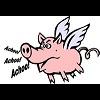Boost Killing Engines? Pressure Or Volume Of Air?
Announcements
-
Similar Content
-
Latest Posts
-
it was good to see our presence at GTR festival..hope to see more SAU at these events
-
Thanks for the quick replies guys its appreciated. A small extension was welded onto the standard 6boost external gate pipe which you can see where the pipe goes from black to stainless just below and to the right of the rear housing in the first picture. Overall I would say the flow is pretty good other than 6boosts choice to come straight off the collector at a decent angle.. Not sure why I went with two valves, I originally replaced the stock twin bovs with the GFB when I had the twins on. When I purchased the EFR it came with the Turbosmart Kompact BOV so I figured that would be a better option than the stock EFR Bov. I don't believe the Turbosmart BOV is adjustable? When I get the spike and then sudden dip in boost pressure, the turbo speed does drop as well. Stock head size wise however I believe it has Neo Turbo springs and a Neo Turbo intake camshaft and an aftermarket exhaust camshaft in the vicinity of 260 degrees. We didn't try a different MAC valve, we tried two different ways of plumbing it and we also tried removing the mac valve entirely and just having the boost source from the turbo directly connected to the wastegate and it still spiked / dropped and exhibited the same behaviour. Standard R33 GTR 5 speed tansmission. I'm running a Haltech Elite 2500 and can provide some logs if you. I understand what you're saying in that it looks like an auto plot however no, it's still a manual and it just has a lot of torque down low, for all intents and purposes it's a very impressive street car. I've attached a photo of the quickbitz dyno plot which was when the only difference is I was running -5 twin turbos with a mac valve. As you can see theres a decent dip in AFRs between 125kmh and 135kmh. Our problem now is not that the AFRs are dropping, just the boost pressure is dropping, however it is evident in the same RPM range of the map, coincidentally or not.
-
What transmission are you running? It's a bit tricky with the scaling, but at face value the power "curve" looks more like a "line" which is a bit odd... basically a lot more like a dyno plot I'd expect with a highish (compared to a factory auto) stall torque converter type setup. If this is running an auto then this kind of boost control challenge is definitely a thing, the rpm scale on the dyno doesn't reflect what the engine is actually doing (unless the dyno has access to the engine's ACTUAL speed electronically) and what you'll get is a big rpm flare up as the engine torque launches past the converter pump's ability to resist torque at that rpm, then as the converter starts picking up rpm it will kinda even out again and the engine rpm will pick up more steadily. The trick with this "flare up" is if it's kinda near the boost threshold for the turbo then the engine's airflow requirements to maintain the previous boost level will outrun the turbo's ability to supply that boost - so you end up with a natural flattening off, if not dip when that happens. If you are running closed loop, or even tune the "feed forward" wastegate duty cycle to deal with that rpm spike then when the engine starts settling to a more typical climb you'll actually have a situation where the gate is "too closed" and boost will run away for a bit, then have to pull down again. It's not trivial to get this perfect as most boost control systems are generally expecting more predictable engine rpm rates of change, but if you *know* that's whats going on then you can at least "accept your fate" and realise getting that area perfect is kinda chasing your tail a bit, and assume that if the rest is working sensibly and the spike/dip isn't completely uncontrolled then you should be good. Sorry if I've gone off on a tangent, but the dyno plot and boost control behaviour look a LOT like what I've seen tuning autos in the past. What ECU are you running? Could possibly be convinced into looking at logs if I get too bored this weekend haha.
-
A few things that seem a bit off here. - why is there 2 BOV’s? - the turbo smart BOV on the compressor housing, is it turned up ALL the way? I have seen this become an issue on old man Pete’s car. It would push open and recirc, turbo speed would rise and the boost pressure would do weird things. - stock head? Does that include springs? - tried a different MAC valve? Is it plumbed correctly?
-








Recommended Posts
Create an account or sign in to comment
You need to be a member in order to leave a comment
Create an account
Sign up for a new account in our community. It's easy!
Register a new accountSign in
Already have an account? Sign in here.
Sign In Now